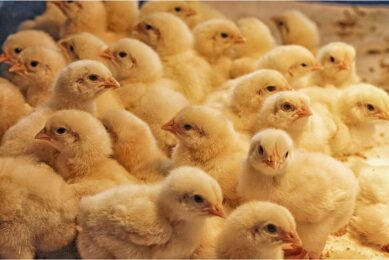Gaining a better understanding of probiotics

A self-learning programme teaches professionals the different modes of action of probiotics. The editor of All About Feed, which is a sister publication to Poultry World, spoke to Marcelo Lang, global marketing director at Chr. Hansen, who tells us more.
It’s a difficult task to choose the right probiotic, since probiotics have various modes of action which support animal health. According to Marcelo Lang at Chr. Hansen, this was the reason for setting up a programme, which aims to educate professionals in the animal protein industry on the modes of action of probiotic bacteria.
Why is it important to understand the modes of action of probiotics?
There is a connection between the typically measured variables of economic importance in production animal agriculture and the major modes of action of probiotic bacteria. At the same time, not all probiotics are the same. Strain matters! By gaining a better understanding of what probiotics do and how they affect performance in farm animals, veterinarians, nutritionists and other professionals can make better decisions about which products will help the animals in their care.
Is there a lack of knowledge in the feed industry regarding the use of probiotics?
There’s a lack of knowledge, but it’s an uneven picture. Some professionals are quite familiar with the effects of probiotics and use them very effectively, while others still haven’t caught up and are missing out. Thanks to new techniques, the science is advancing so quickly that even those professionals who are already familiar with and using probiotics will have a lot to gain from this programme.
What is your target group for the programme?
We developed the Modes of Action programme with food animal veterinarians and nutritionists in mind. Other professionals in the industry will also benefit from the programme, but they may find some aspects a bit challenging. For example, the lessons on the effects of probiotics on the microbiome or the modulation of the innate and adaptive immune system may require some extra attention.
Can you tell us a bit more about the content of the programme?
There are 4 courses. The first is a short introduction to the overall programme, while the other 3 contain 2 or 3 lessons each, divided by specific types of interactions of probiotics with feedstuffs, with other microbes, and with the host. At the end of each lesson, there’s a short quiz to help reinforce what has been learned.
What is the mode of action of probiotics?
Probiotic bacteria affect animal health and performance through interactions with feedstuffs, with other microbes, and with the host animal. In interactions with feedstuffs, we learn how these bacterial actions improve the digestion and availability of essential nutrients. In interactions with other microbes, we learn how probiotic bacteria successfully outcompete and eliminate potentially pathogenic organisms from their microenvironment and how those actions can lead to lasting positive changes in the intestinal microbiome.
Probiotics to control avian intestinal spirochaetosis
Brachyspira is a bacterium that causes a disease known as avian intestinal spirochaetosis in poultry, primarily in laying hens and broiler breeders. A study showed that Lactobacillus reuteri and Lactobacillus salivarius, were able to inhibit Brachyspira in several different ways. Read more…
Finally, in interactions with the host, we learn about the myriad interactions of probiotic bacteria with the intestinal lining of their host. These interactions actively support the major barrier and immune functions of the intestinal tract.
Can you say more about these different modes of action?
When interacting with feedstuffs, some probiotics can convert sugars to organic acids that improve the intestinal environment and which serve as precursors to absorbable volatile fatty acids. Some probiotics produce an array of enzymes that drive the digestion of relatively hard-to-digest fibres and improve the solubility of proteins.
When interacting with other microbes, probiotics are able to produce and secrete potent antimicrobial peptides that kill potentially pathogenic organisms, without causing any harm to other probiotic or commensal organisms.
Probiotic bacteria can competitively exclude the binding of potentially pathogenic organisms to intestinal microvilli, the site of nutrient absorption. Probiotic bacteria support the proper development of absorptive capacity in young, growing animals. They also actively support the barrier functions of the intestinal tract, specifically the proper function of apical tight junctions. In addition, probiotic bacteria interact with specialised cells of an animal’s immune system to improve their capacity to respond to challenges.
What are the health benefits for animals when using probiotics?
Through their effects on feedstuffs, probiotics improve the digestion and availability of essential nutrients, which animals can use to maintain themselves, defend themselves, grow, and produce meat, milk, or eggs. Direct antagonism of potentially pathogenic organisms helps keep animals healthy and thriving.
Gaining an understanding of the trillions of organisms that make up the intestinal microbiome is an essential element in making the most informed product choices for your animals.
Finally, through their direct effects on the host, probiotics reinforce the gut barrier functions, which stop pathogenic organisms from invading animal tissues and causing disease.
How do you know which probiotics to use in a certain situation?
Not all bacteria are equal in their ability to interact positively with feedstuffs, with other microbes and with the host: strain matters! Choosing the right probiotic depends on the specific situation or challenge facing each particular food animal production system. Understanding the modes of action of probiotic bacteria will enable you to make the most informed product choices for the animals in your care.
 Beheer
Beheer











 WP Admin
WP Admin  Bewerk bericht
Bewerk bericht